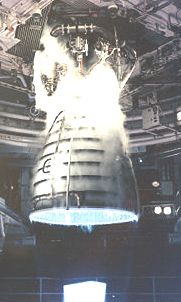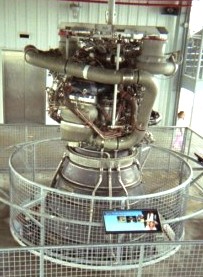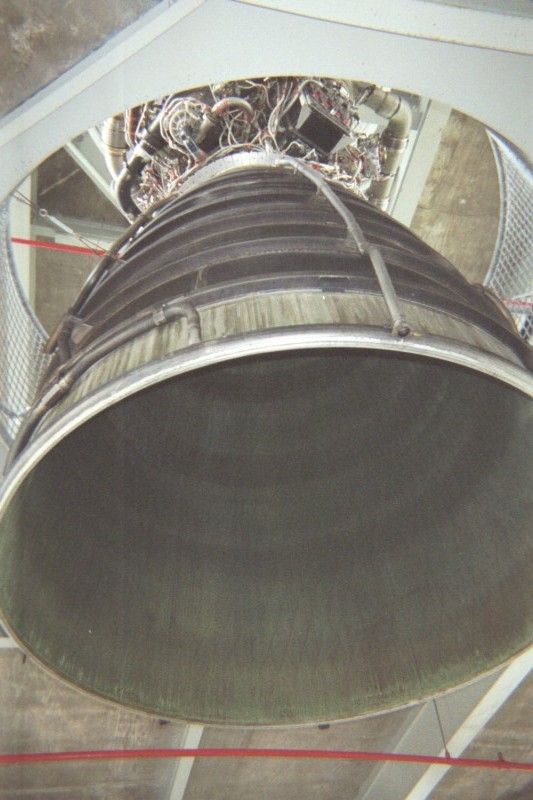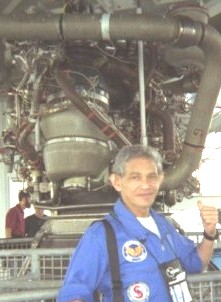|
The
Launch Complex (LC)-39 Observation Gantry is a 60-foot
tall structure that provides a breath-taking, 560-degree, view of the two giant Shuttle Launch Pads (39A and 39B).
In
addition, the panoramic view also encompasses the Launch Control Center, the well-traveled crawlerway, and the massive Vehicle
Assembly Builidng- the largest such structure in the world.
A theater presentation and interactive room at the gantry’s base gives you a behind-the-scenes
briefing on what it takes to launch and land every NASA Space Shuttle
OK. . . that's me (photo above) pointing to the Space Shuttle
seen from a distance, that was (at the time) being readied for launch. . .
|
|
There was one other very interesting 'attraction' they have
right there at the Observational Gantry: a full-size actual model of a Space Shuttle engine . . .


In the Space Shuttle itself, there are three of these engines
that you see, which are referred to as the Space Shuttle Main Engines (SSME), that have
been designed and built by the Pratt & Whitney Rocketdyne Division of Pratt & Whitney.
These engines are what provides the power for lift-off (along
with the solid rocket boosters attached to both sides of the main external fuel tank) by providing 400,000 lbs of thrust
at sea level, and 490,850 lbs of thrust in a vacuuim. At 100 full power, there's about 2,747 lbs per sq.inch of
Chamber pressure.
These engines can operate at extreme ranges of
temperatures The liquid hydrogen fuel is stored
at −253 degrees Celsius (−423 degrees Fahrenheit). However, when burned with liquid oxygen, the temperature in
the combustion chamber reaches 3,300 °C (6,000 °F), higher than the boiling point of iron.
The main engines collectively consume 1,035 gallons (3,917
liters) of propellent per second. If the main engines pumped water instead of liquid oxygen and liquid hydrogen, an average-sized
swimming pool could be drained in 25 seconds.


Oh, by the way. . . there's a nice refreshment parlor at the
base and as it was getting towards noontime, I did manage to grab myself a sandwich and a cup of hot coffee while waiting
for the next official NASA tour bus to get me to the next attraction site /point of interest . . .
|
|
|
. . . Then for our next stop-over, we proceeded to
visit the International Space Station Facility where we could have an up-close and personal experience of
what it looks and feels like to be on board the Space Station.
|
|
|
|
